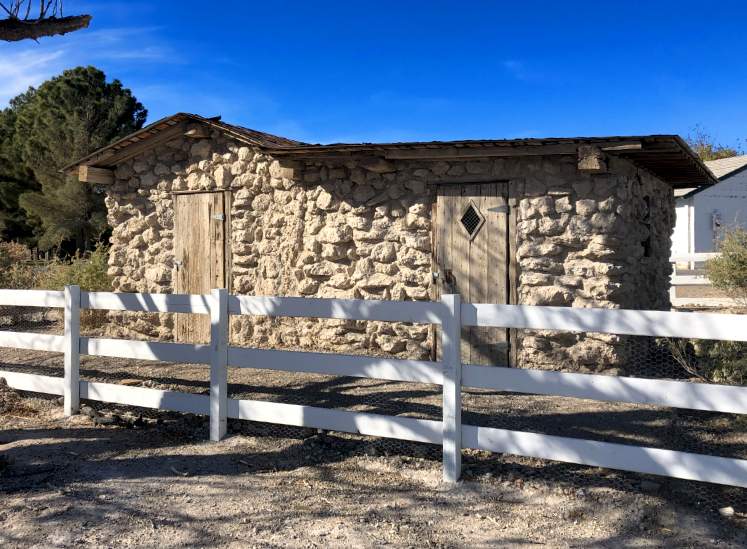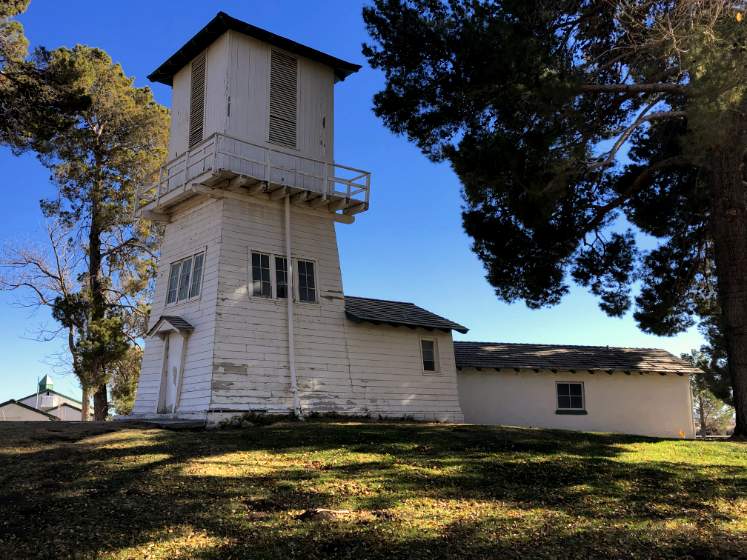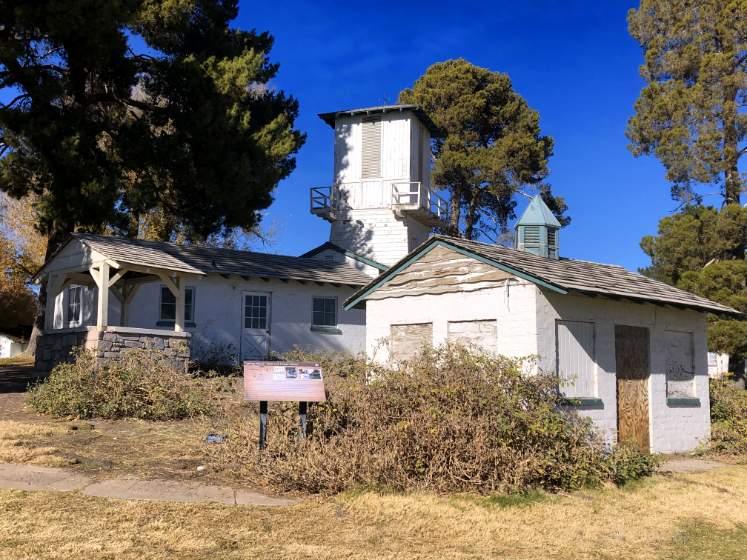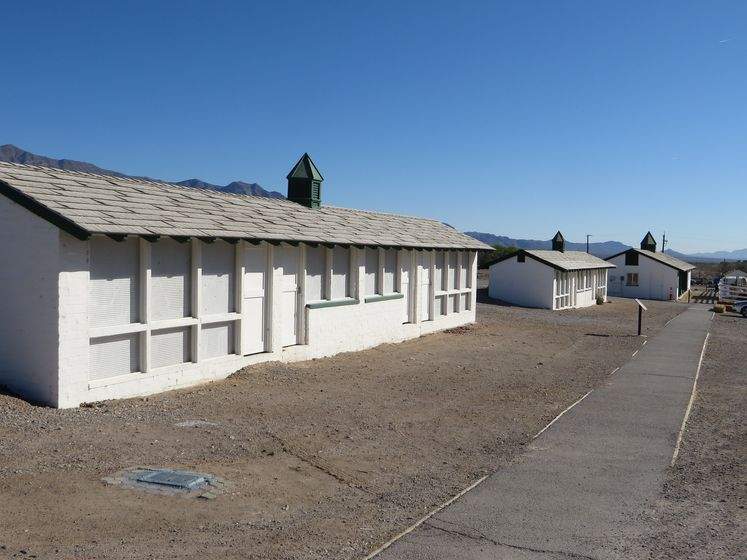
Tule Springs Ranch

The Adobe Hut was built in the early 1910s. The hut existed on the property when it was purchased in 1916.

The Water Tower was built in 1942.

The Spring House, Well and Power House was built in 1942.

"Stables, Floyd Lamb Park, Las Vegas, Nevada" by Ken Lund is licensed under CC BY-SA 2.0.
"The availability of fresh spring water from the Tule Springs made the site ideal for development. Native Americans used the springs during seasonal trips through the area. Around 1904 the population of Las Vegas began to grow with the impending arrival of railroads and Tule Springs became a watering stop on the stage route to the Bullfrog mining camps to the northwest. In 1906 the Las Vegas & Tonopah Railroad by passed Tule Springs one mile to the west, halting development of the site. A newspaper article from May 1906 suggests that Tule Springs was abandoned.
In 1916 Millard W. Blodgett, a native of Ohio, received a 120-acre land grant from the State of Nevada. The westernmost 40 acres would become the nucleus of the Tule Springs Ranch. Blodgett did not improve the property. He sold it one year later to John Herbert Nay who began agricultural development. The historic area contains several historic buildings and structures that comprised Tule Springs Ranch, purchased and named by Las Vegas businessman Prosper Goumond in 1941. The southern grouping of buildings contains the residence of the ranch foreman and other ranch buildings, as well as buildings for the use of paying guests, many of whom were seeking Nevada divorces. At the northern edge of the historic area is a line of agricultural buildings that supported the working cattle ranch. Tule Springs Ranch closed in the late 1950s."
(Floyd Lamb Park)
Listed on the National Register of Historic Places in 1981.
Listed on the City of Las Vegas Historic Property Register in 2008.
Listed as a U.S Historic District.
Located at 9200 Tule Springs Road, Las Vegas, Nevada.